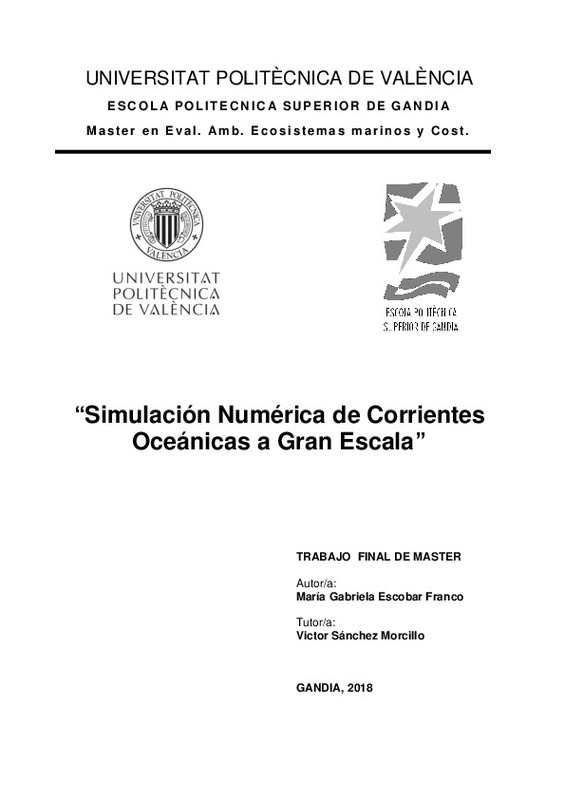JavaScript is disabled for your browser. Some features of this site may not work without it.
Buscar en RiuNet
Listar
Mi cuenta
Estadísticas
Ayuda RiuNet
Admin. UPV
Simulación numérica de corrientes oceánicas a gran escala
Mostrar el registro completo del ítem
Escobar Franco, MG. (2018). Simulación numérica de corrientes oceánicas a gran escala. Universitat Politècnica de València. http://hdl.handle.net/10251/99439
Por favor, use este identificador para citar o enlazar este ítem: http://hdl.handle.net/10251/99439
Ficheros en el ítem
Metadatos del ítem
| Título: | Simulación numérica de corrientes oceánicas a gran escala | |||
| Autor: | Escobar Franco, María Gabriela | |||
| Director(es): | Bourrel, Luc Dewitte, Boris | |||
| Entidad UPV: |
|
|||
| Fecha acto/lectura: |
|
|||
| Resumen: |
La circulación oceánica es el resultado del equilibrio de distintas fuerzas tales como el forzamiento atmosférico, fricción y la rotación planetaria. Este trabajo muestra la base teórica de la circulación oceánica a gran ...[+]
The ocean circulation is a balance of the atmospheric forcing, the friction forces and the planetary vorticity. The objetive is to describe the principal theories of the circulation and the representation of oceanic gyres ...[+]
|
|||
| Palabras clave: |
|
|||
| Derechos de uso: | Reconocimiento - No comercial - Compartir igual (by-nc-sa) | |||
| Editorial: |
|
|||
| Titulación: |
|
|||
| Tipo: |
|
recommendations
Este ítem aparece en la(s) siguiente(s) colección(ones)
-
EPSG - Trabajos académicos [5004]
Escuela Politécnica Superior de Gandia





![PDF file [Pdf]](/themes/UPV/images/pdf.png)


